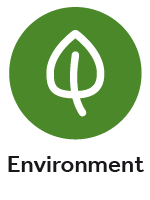
Indicator 10: Outdoor Learning
A review of delivery in the first three years of the plan (2018-21) has been carried out and you can read more in our main findings. This page looks at progress in year 1 of delivery (2018/19) only.

Table shows:
- Indicator of success – Number of young people having an outdoor learning experience in the National Park.
- Target – At least 2500 young people per year over the Plan period
- 2018/19 figure – 2542 young people
- Performance – In line with target
What does this tell us?
During 2018-19 the National Park Authority worked with more than 2,500 young people, meeting the target, and also increased the breadth and depth of the opportunities for young people to engage with the National Park.
As part of Scotland’s Year of Young People new work was piloted alongside the development of existing programmes, aiming to broaden the diversity of young people involved and embed co-design and decision-making. 2018-19 saw the establishment of a National Park Youth Committee, 11 dedicated young people who shape both organisation-wide strategic planning and direct opportunities for young people, including inputting into policy-making and attending Board meetings.
This year I’ve had the opportunity to do things I never thought I could do. Being able to have our say in the changes where we live is so important to us as young people in the National Park.
Other new or enhanced work included running our first Young Person Residentials, developing new opportunities for families through links with the Scottish Refugee Council, expanding our Schools Junior Ranger initiative, and developing an accredited year-round Junior Ranger Programme. Feedback from the young people highlights the impact they are making.
What next?
As with Indicator 9 there is strong potential for overall growth in the National Park Authority programme, due to the increasing requests for support and the opportunities presented by the Curriculum for Excellence, Sustainable Development Goals and Learning for Sustainability policy frameworks. The popularity of our outdoor learning programmes is demonstrated by the willingness from participants to travel from across Scotland to learn more about this iconic place (see map below). However, growth is constrained by internal capacity, more cannot be delivered with current capacity without compromising the quality of the programme.
Where do participants come from?

Contribution to National Outcomes
Progress on this indicator contributes to the following National Outcomes:
Contribution to Sustainable Development Goals
Progress on this indicator contributes to the following Sustainable Development Goals:









